Lenovo is always good for some interesting announcements but CES and it did not disappoint this year with not one, but two dual-screen laptops.
The more consumer-focused one is the Yoga Book 9i, which is essentially two 13.3-inch 2.8K OLED attached at the center with a 360-degree soundbar hinge like those used in its Yoga 9i two-in-one. This allows the screens to be used in a variety of ways such as one big vertical display (pictured above) or horizontally (pictured below) with windows able to move or flow between the two screens. A compact Bluetooth keyboard is included as well as an origami-style folding stand to support the Yoga Book in either position.
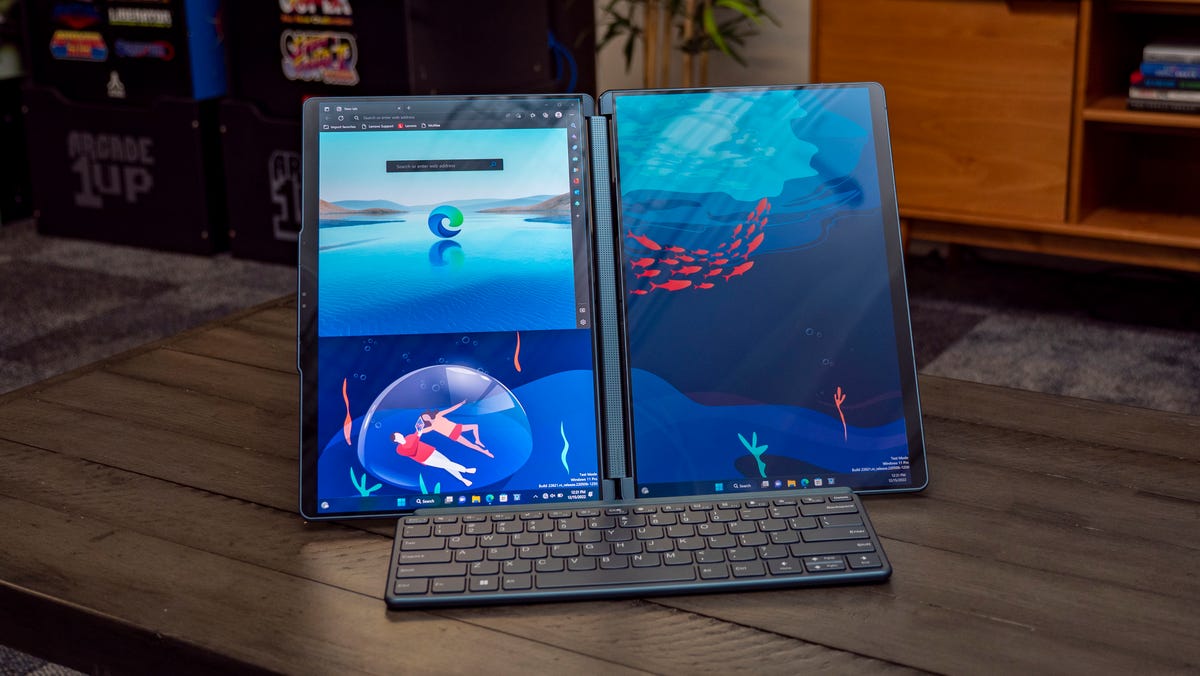
Used in landscape mode, the two displays give you a lot of room to work and it’s better balanced on the included stand.
Josh Goldman/CNET
You won’t always have room to use the Yoga Book 9i as dual displays, though. (It would be pretty awkward on my train commute for sure.) To use it as a regular laptop with a single 13.3-inch screen, you can call up a full onscreen haptic keyboard on the bottom display — the one without the webcam above it — with a ten-finger gesture as if you’re starting to type on a keyboard.
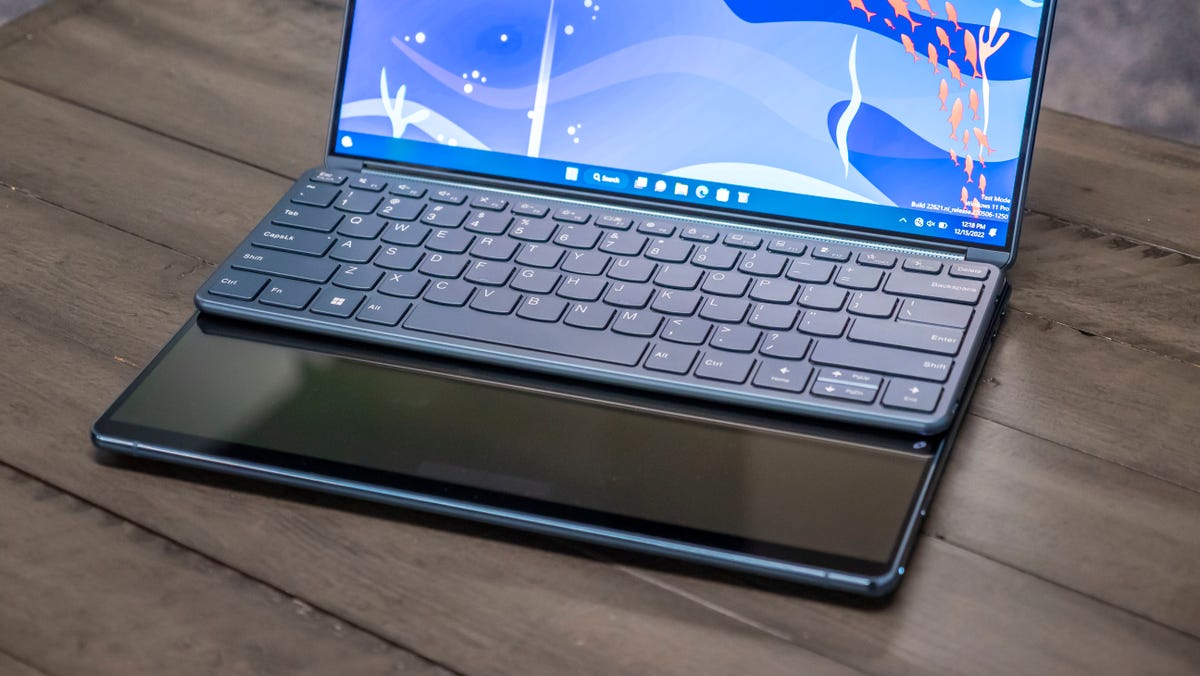
Josh Goldman/CNET
If you’re not a fan of touch-typing on screen (I’m not), the included Bluetooth keyboard magnetically attaches to the bottom display and the bottom half turns into a touchpad. You can also slide the keyboard to the bottom half of the screen and continue using the top half as extra display space.
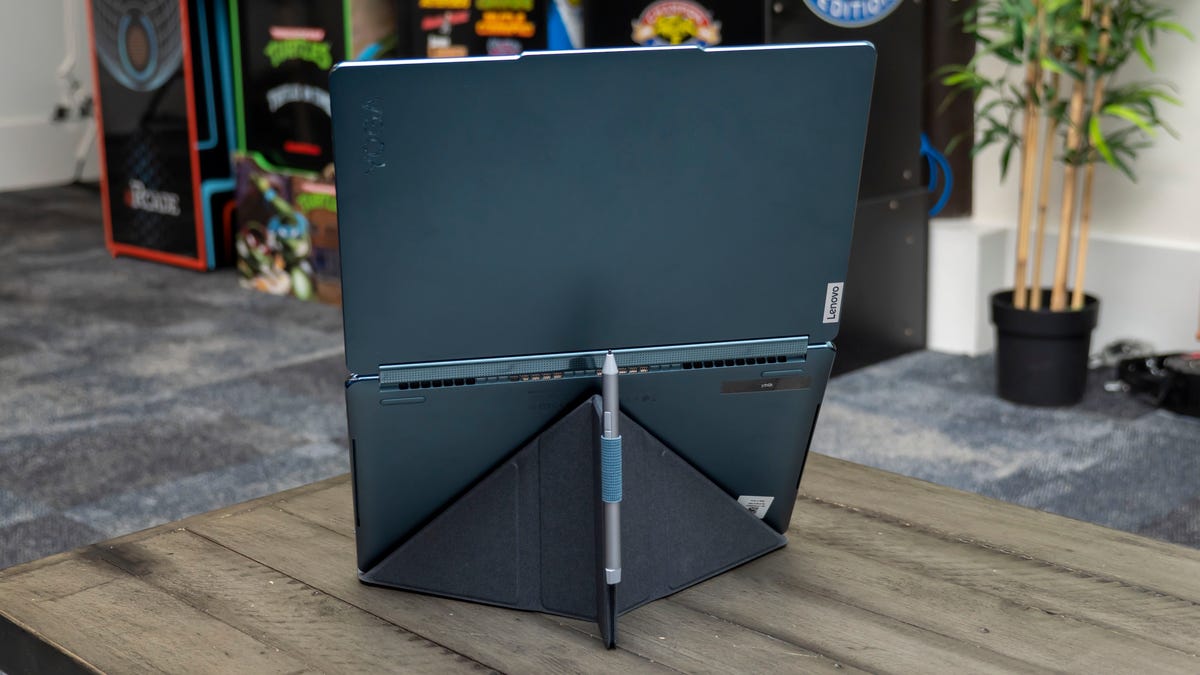
The folding stand does not inspire confidence when used in this position, but it does hold the included pen.
Josh Goldman/CNET
A Lenovo-designed active pen is included, too, and there’s unique software for notetaking to take advantage of the two displays. For example, you can view a video conference on one screen while you take notes on the other. And when you’re done working, the stand doubles as a carrying case to hold the pen and keyboard.
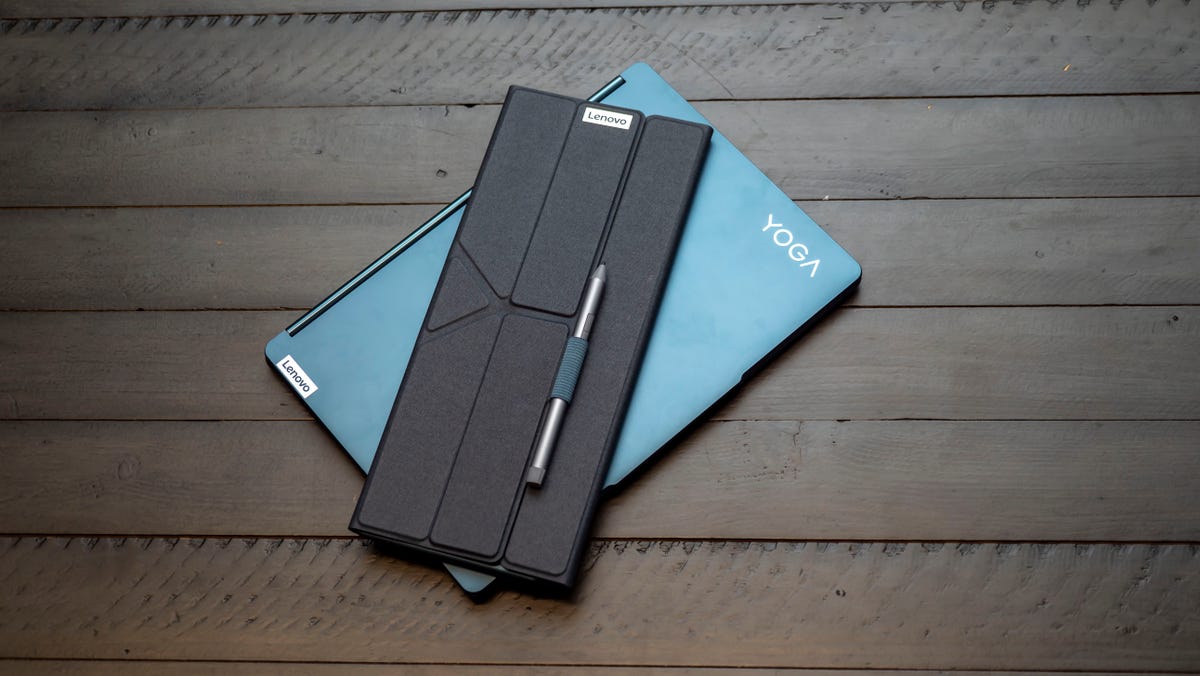
Josh Goldman/CNET
Powered by 13th-gen Intel Core processors, the Yoga Book 9i will start at $2,100 and is expected to be available starting June 2023. Availability for the UK and Australia wasn’t announced but the price converts to approximately £1,765 and AU$3,108.
The ThinkBook Plus has been around for a few years now and is a completely different take on a dual-screen laptop. The second-gen model was a traditional laptop with the exception of an E Ink display on its lid. The Gen 3 model switched things up by putting a secondary 8-inch display next to the keyboard. For the new ThinkBook Plus Twist, Lenovo went back to the Gen 2 design but this time used a color E Ink display and put the displays on a rotating hinge.
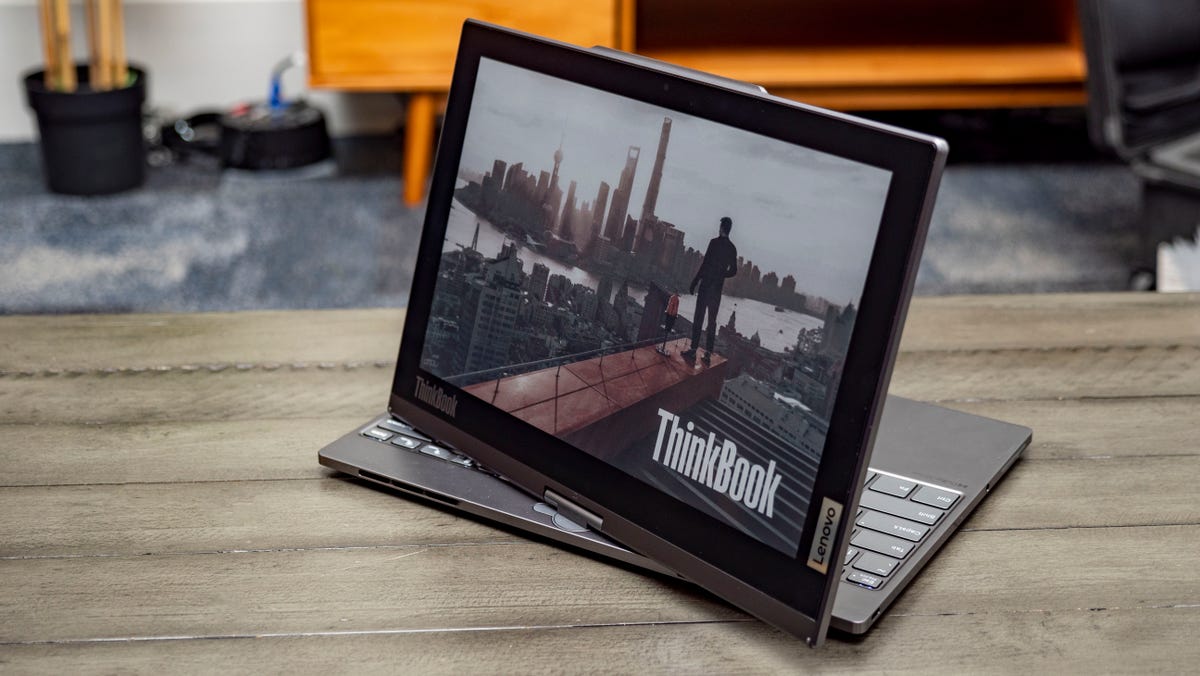
The color E Ink display on the ThinkBook’s lid can be rotated and used as your main display with Windows 11.
Josh Goldman/CNET
So the laptop has both a 13.3-inch 2.8K OLED display and a 12-inch E Ink touch display. When you rotate the E Ink screen to be in front of the keyboard, it turns off the OLED and switches the E Ink screen to the main display for Windows 11. Unfortunately, you can’t have the displays mirror each other, which might be handy for commercial uses or giving presentations.
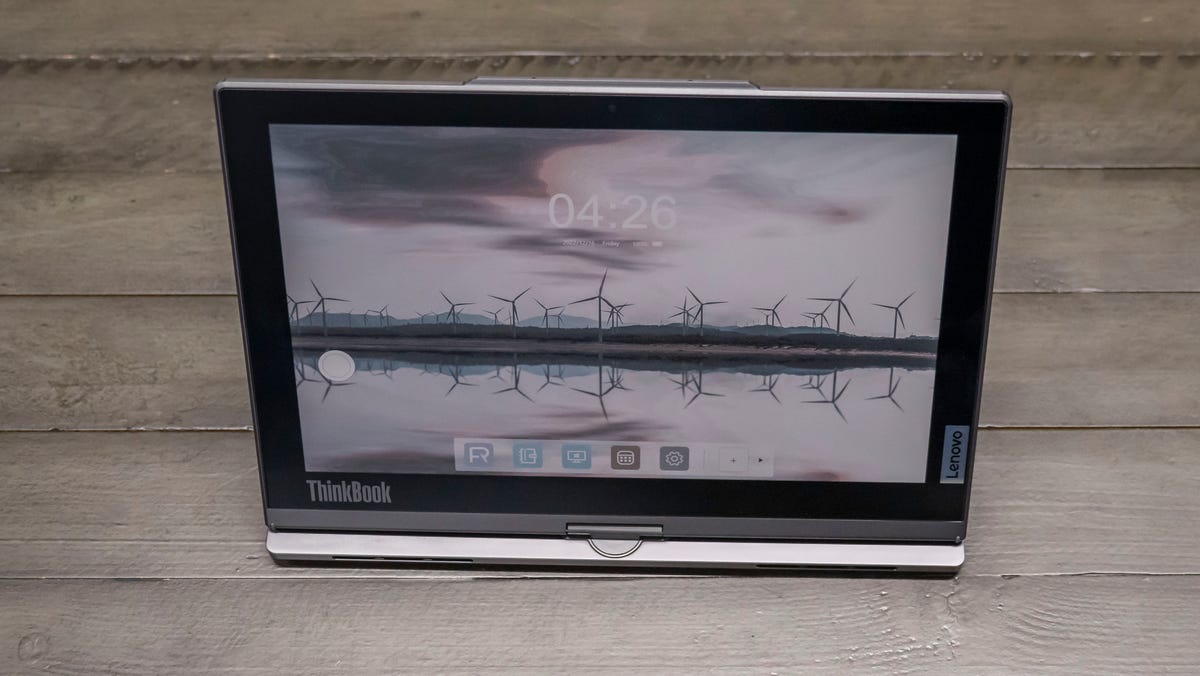
The E Ink display has its own software when rotated to the outside.
Josh Goldman/CNET
Both displays work with the bundled pen. The E Ink display is handy for jotting down a quick note like a list of action items in a meeting without opening the laptop. It can also be used for full-on notetaking, viewing e-mail and your calendars, keeping an eye on notifications, etc. Of course, if the display rotates you can also do all of that stuff with the main OLED display and much much more.
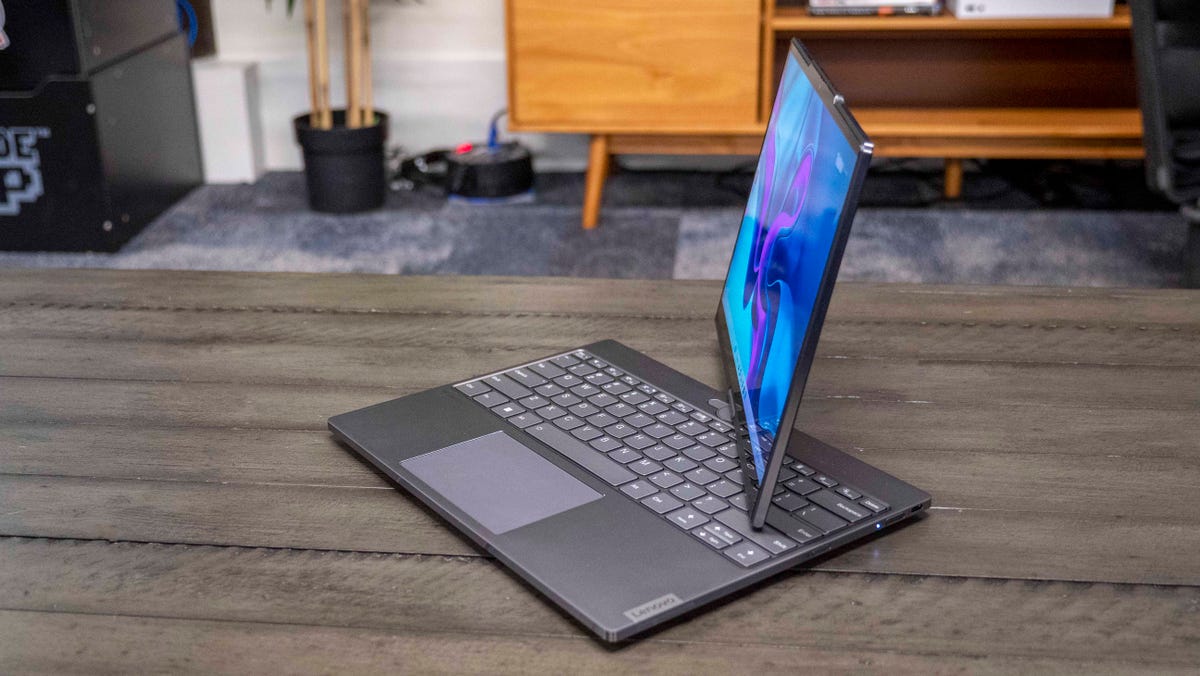
Josh Goldman/CNET
So why make it rotate then? When we asked Lenovo that question the answer was more or less so that the E Ink could be used for reading and keeping an eye on things without opening the laptop, but also the OLED could be used in tablet mode for streaming video or drawing or anything else where using the OLED as a tablet makes more sense than the E Ink. You could also use the E Ink to get simple office work done in Windows when your battery is running too low to use the OLED as the E Ink sips power.
Look for the Lenovo ThinkBook Plus Twist in June starting at $1,649.
